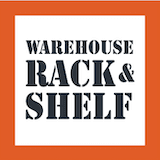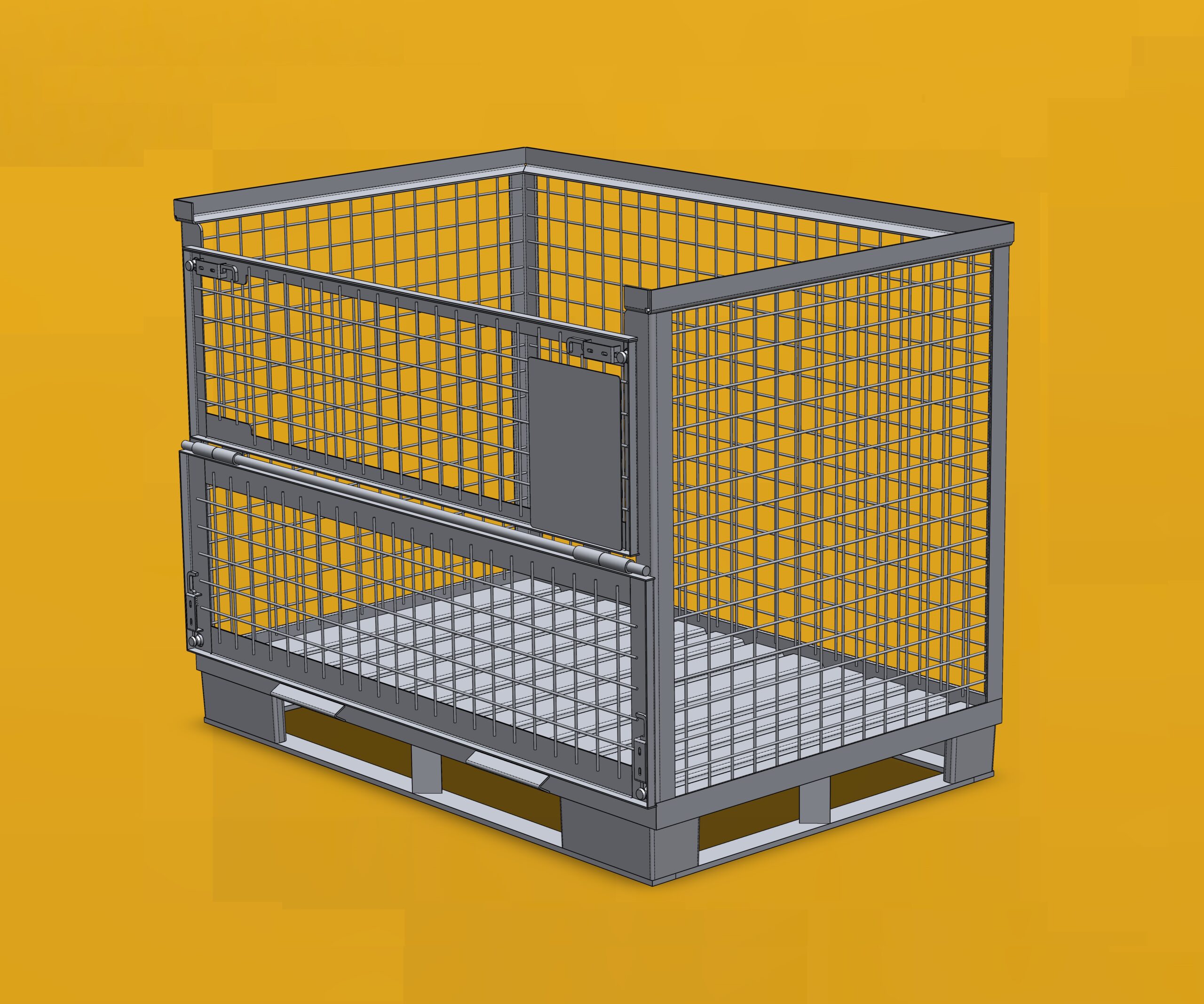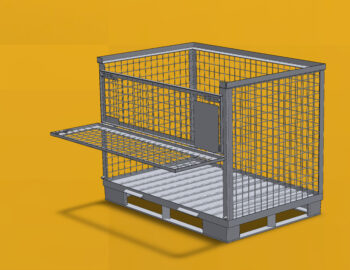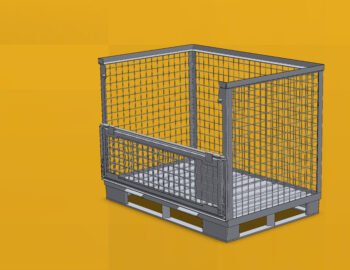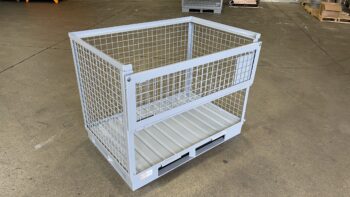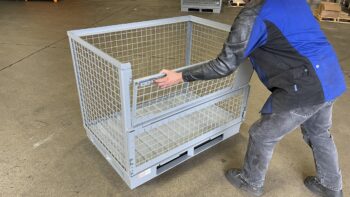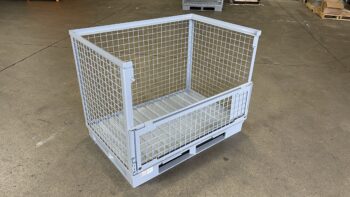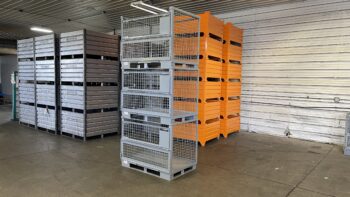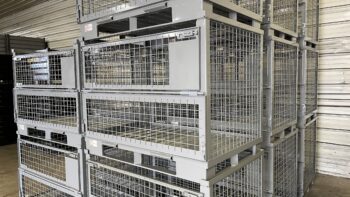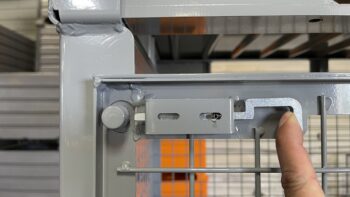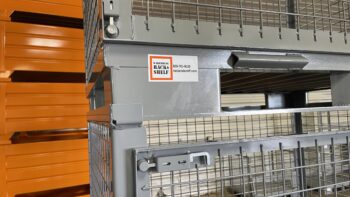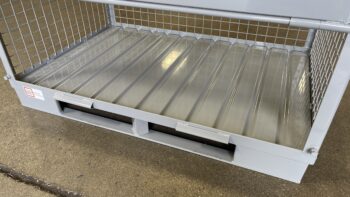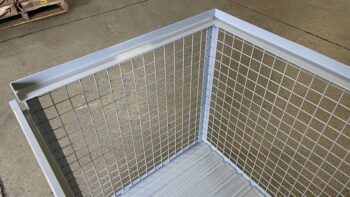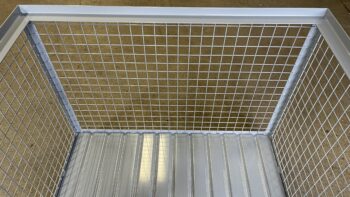Gitterboxes | Wire Mesh Transport Containers
48.75″ x 33.3″ x38.13″ O.D. Gitterbox Overseas Wire Mesh Transport Container. New. Capacity: 3,300 lbs. Static Stackable: 4 High. Finish: RAL 7046 Telegrey Powder Coat Throughout. Weight: 190 LBS. Part Number: CMWS493339
NOTES: MINIMUM ORDER QUANTITY 20 PCS. FOB: Milwaukee, WI. EST. LEAD TIME: 8-10 weeks.
The term “Gitterbox” can be a bit ambiguous and encompasses several different types of containers, including some that are used as overseas wire mesh transport containers. These are essentially shipping crates made of welded wire mesh, designed for heavy-duty storage and transportation. They’re particularly good for large, bulky, or irregularly shaped loads, often used in overseas cargo shipments.
Some Gitterboxes are collapsible, so they can be folded when not in use. This feature is helpful for saving space when the containers are empty or during transportation.
The steel construction of Gitterboxes makes them durable and capable of withstanding heavy loads. This durability ensures a longer lifespan and cost-effective storage solutions.
The Gitterbox EPAL is a standard container used in warehouses and manufacturing around the world. It’s also called Euro-Pool Gitterbox UIC, which means it’s manufactured following UIC 435-3, DIN 15 155 standards. It consists of open contours filled with welded mesh of 50×50 mm, and it’s made with two opening flaps allowing access to components or parts located at the bottom of the container.
Gitterboxes are stacked and transported using various modes of transportation, such as sea freight or intermodal transport, depending on the destination. After arriving in Europe, Gitterboxes can be easily stored in warehouses due to their stackable design, awaiting distribution or further transportation. After products are distributed, Gitterboxes can be collapsed and returned to the U.S. for reuse, making them a cost-effective, efficient, and environmentally friendly solution for manufacturers involved in international shipping and logistics.
